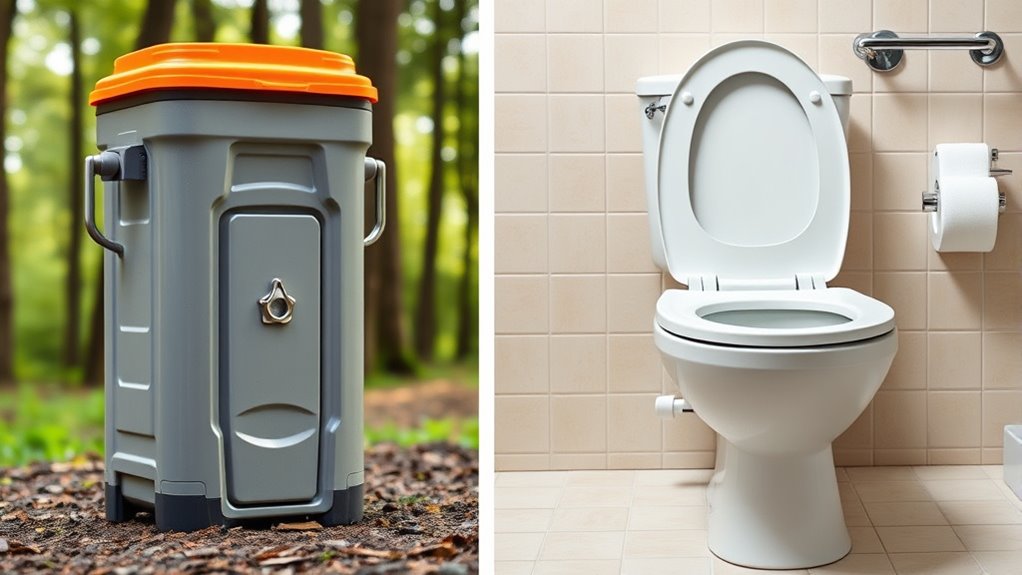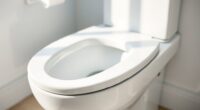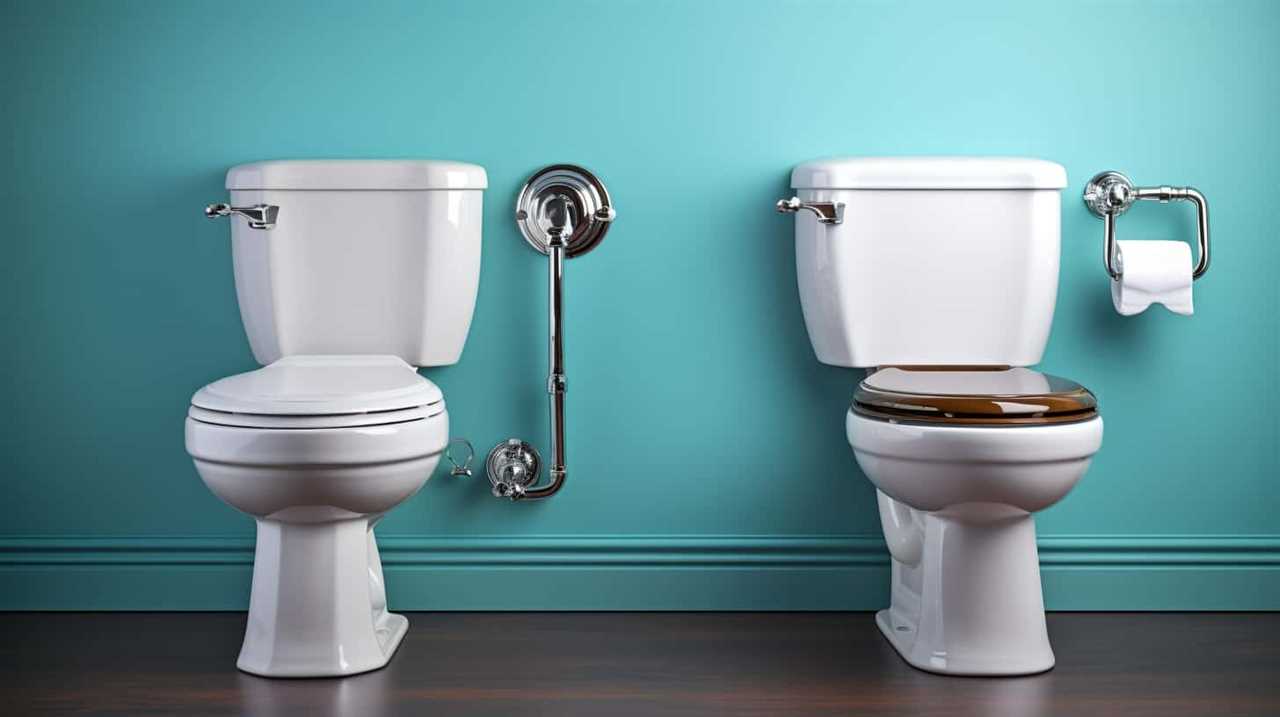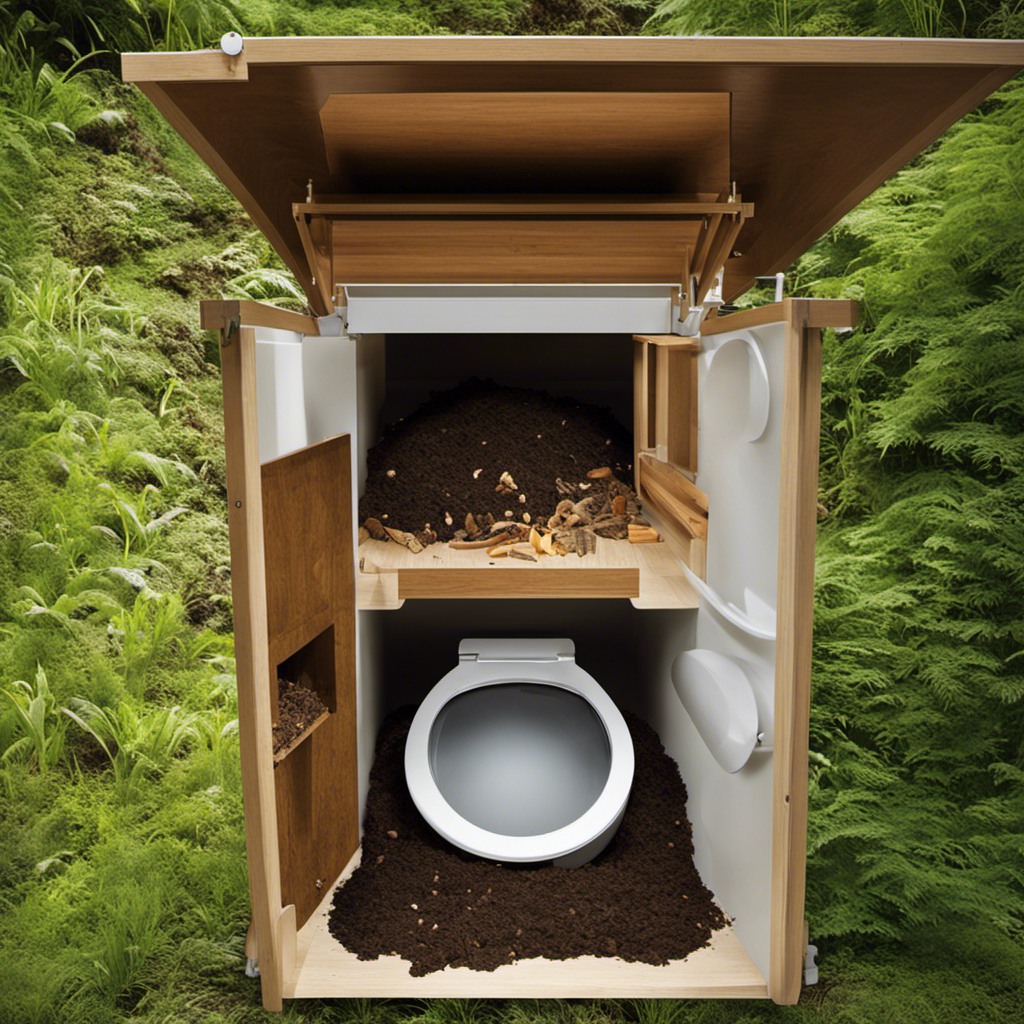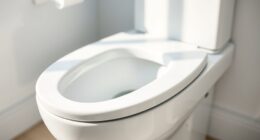Portable camping toilets are designed for easy transport and outdoor use, featuring lightweight, compact bodies and sealed waste tanks that need manual emptying at designated sites. In contrast, standard home toilets are fixed, connected directly to plumbing, and handle waste automatically. While portable units require ongoing maintenance and waste management, home toilets offer consistent sanitation with minimal effort. To discover more about these key differences and how to choose the right option, keep exploring further.
Key Takeaways
- Portable camping toilets are lightweight, compact, and designed for easy transport, unlike fixed, permanent home toilets.
- Portable units contain sealed waste tanks needing manual emptying, whereas home toilets are connected to plumbing for continuous waste removal.
- Portable toilets often require external hygiene supplies and regular cleaning, while home toilets are maintained with household disinfectants.
- Portable toilets are suitable for outdoor or remote environments lacking plumbing, unlike standard toilets designed for indoor use.
- Portable units demand planning for waste disposal and maintenance, whereas home toilets provide automatic waste management with minimal manual effort.
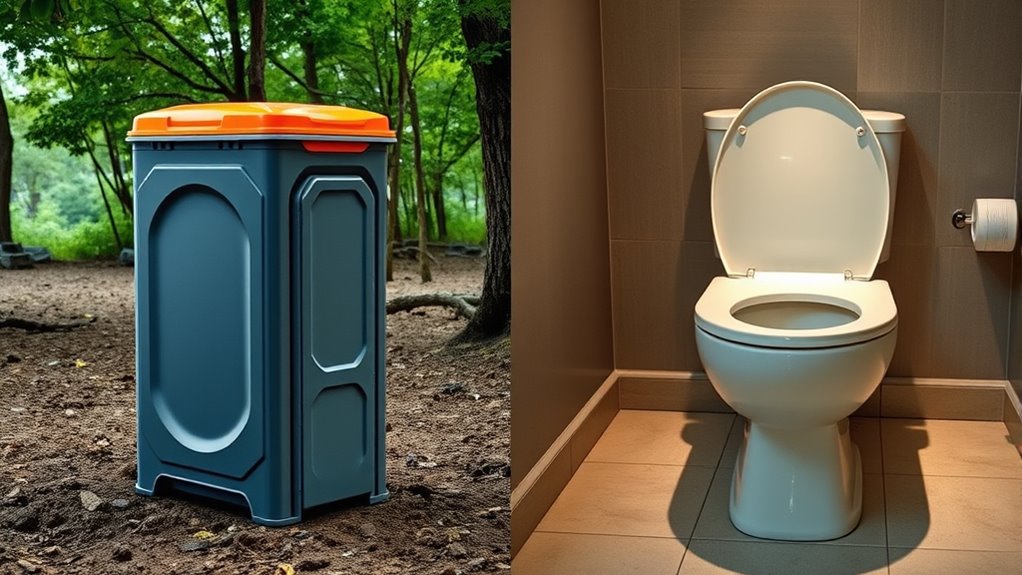
When choosing a camping toilet, understanding the differences between portable and standard options can make your outdoor experience more comfortable. Portable camping toilets are designed for mobility, offering convenience in remote locations or during outdoor adventures. They’re typically compact, lightweight, and easy to transport, making setup and cleanup straightforward. Standard home toilets, on the other hand, are built for long-term use in a fixed location, with plumbing systems that handle waste disposal and hygiene maintenance automatically. Knowing how each type manages waste and cleanliness will help you pick the right solution for your needs.
With portable toilets, waste disposal is a key consideration. Most models use a sealed tank or cassette system, which traps waste until you can empty it at designated disposal sites. This setup prevents odors and leaks, but it requires you to plan for regular maintenance. You need to carry waste away safely, following local regulations, and ensure the tank is emptied properly to avoid spills or contamination. Hygiene maintenance is equally important; portable units often come with hand sanitizer dispensers or require you to bring your own supplies. You’ll want to keep the seat and inner components clean, often using specialized disinfectants, to prevent the spread of germs. Since these toilets are used in outdoor environments, you may also need to carry toilet paper or wipes, as well as disposal bags for used materials. Proper waste management is crucial to safety and hygiene, especially in outdoor settings.
Standard home toilets offer a different experience. They connect directly to the plumbing system, providing continuous waste disposal without manual intervention. This means you don’t need to worry about emptying tanks or bringing extra supplies for waste management. Hygiene maintenance is more straightforward because the flushing mechanism and water supply help keep the toilet clean and sanitary. Regular cleaning with household disinfectants is usually sufficient to maintain hygiene standards. However, these toilets aren’t portable, so they’re unsuitable for outdoor or remote environments where plumbing isn’t accessible.
Frequently Asked Questions
Are Portable Camping Toilets Environmentally Friendly?
You might wonder if portable camping toilets are eco-friendly. Generally, they are designed with eco friendliness in mind, using less water and reducing waste. They also promote better waste management by containing and safely disposing of waste, minimizing environmental impact. By choosing models with biodegradable bags or efficient waste systems, you can guarantee your camping habits stay environmentally responsible, helping protect nature while enjoying the outdoors.
How Long Can a Portable Toilet Last Without Maintenance?
You wonder how long a portable toilet can go without maintenance, considering waste decomposition and tank capacity. Typically, if you use it lightly and the waste remains manageable, it can last several days to a week before needing emptying or cleaning. Regularly monitoring the waste level, ensuring proper ventilation, and using appropriate chemicals help extend its usability. Proper maintenance keeps it odor-free and functioning efficiently, maximizing its lifespan without immediate attention.
Do Portable Toilets Require Special Disposal Procedures?
You need to follow proper waste management procedures for portable toilets, especially during chemical disposal. Always use designated disposal sites and avoid dumping waste in regular toilets or on the ground. Proper chemical disposal helps prevent environmental contamination and adheres to local regulations. Make sure to drain and clean the unit regularly, and follow manufacturer instructions to guarantee safe and responsible disposal of waste and chemicals.
Can Portable Toilets Be Used Indoors Safely?
You can use portable toilets indoors if you make certain that proper ventilation requirements are met. It’s crucial to choose a well-ventilated area to prevent odors and moisture buildup. Keep in mind that indoor installation may require additional setup, like sealing or covering vents, to maintain safety and hygiene. Always follow manufacturer guidelines and local regulations for indoor use, and consider whether the portable toilet is suitable for indoor placement.
What Are the Cost Differences Between Portable and Standard Toilets?
It’s ironic how you might think portability saves money, but the cost comparison tells a different story. Portable toilets are generally more affordable upfront but can add up with frequent rentals or maintenance. Standard home toilets involve a higher initial investment but lower ongoing costs. Your affordability analysis reveals that, over time, standard toilets often prove more economical, making them a smarter choice if you’re thinking long-term.
Conclusion
Whether you’re venturing into the wild or relaxing at home, understanding the key differences between portable camping toilets and standard home toilets helps you make the right choice. Think of portable toilets as your trusty sidekick in the great outdoors—compact, convenient, and ready to go whenever you are. At home, your standard toilet provides comfort and stability. Knowing when to rely on each turns your bathroom experience into a smooth ride, no matter where life takes you.
